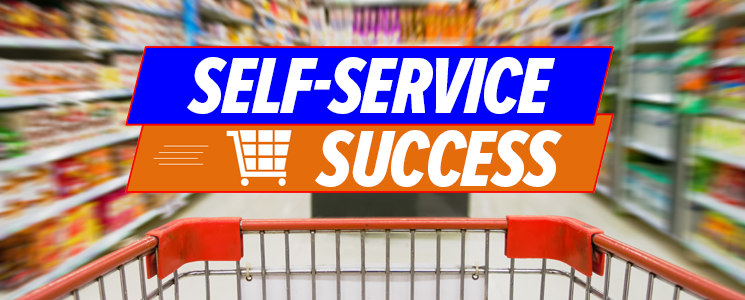It seems that the nostalgia industry will never die. But anyone who wants to turn back the clock might get more than they bargain for.
For example, you’re on your way home from work. You duck into the grocery store to pick up one small item, like a can of tomato sauce. Immediately you feel like you’re on an episode of Supermarket Sweep. When you get to the end of the aisle you look at the registers and every one of them has a line.
At this point you need to do a quick analysis of which line is shortest and moving the fastest, as well as your proximity to that line in relation to everyone else doing the same thing as you. Choose the wrong line and it is frustration city.
Nowadays the saving grace for those folks who want to get in and out quickly—you know, like the people who have their fare ready before they get on the bus—most grocery stores have an array of self-checkout stations. This allows you to scan, bag, and pay for everything as fast as you can and be on your merry way, slurping spaghetti until you heart is content.
Ok, so maybe nostalgia isn’t all it’s cracked up to be. But what’s really going on at the grocery store?
Embracing Self-Service is a No Brainer
What we’ve got here is self-service. We see self-service everywhere. In many cases it’s become the norm, like at ATMs and gas stations in 48 states and the District of Columbia (I’m looking at you, New Jersey and Oregon). Of course, self-service can take many different forms. When we’re talking about addressing customer concerns one of the most used channels is the phone.
Automating common tasks over the phone with a self-service application cuts to the heart of customer service and customer experience. Customers want their issues resolved quickly and self-service allows companies to collect and disseminate information quickly. If self-service can’t do that, then it doesn’t matter. Plain and simple.
For many tasks, self-service is the contemporary grocery store checkout because callers spend less time with self-service than they would with an agent. In other words, self-service gives customers exactly what they want. Companies like this because it helps improve first contact resolution, which leads to happier customers.
There is No Magic Button
There is no shortage of interactive voice response (IVR) horror stories. After all, people notice bad IVR more than good IVR. If an IVR doesn’t provide callers with information quickly then they won’t like it. There’s no reason for customers to experience IV-ARGH!! as opposed to IVR.
Happy, delighted customers are always the end goal. But every company is different and a one-size-fits-all approach to customer service just doesn’t pass muster. That’s why a custom self-service application is so beneficial.
A custom application lets companies step back and ask “what is the customer journey here?” Doing so lets them laser-focus their attention on that question and develop a call-flow that maximizes customer happiness.
What does a bad call-flow look like? Too many menus and unintuitive navigation, long prompts that callers can’t skip, too many prompts or confirmations that add time to each call, failure to give callers an easy way to transfer out of the application if needs be, are all examples of things that grate on callers.
So what should companies focus on when creating a call-flow? When thinking about the customer’s self-service journey it’s helpful not to just think about what information callers want, but also how and when to present that information to them for maximum efficiency.
Although sitting down and hammering out what that call-flow will look like can be the most difficult aspects of making a custom solution, the nice thing is that once it’s done managing the call-flow becomes a process of continuous monitoring and optimizing. Making minor adjustments to an application is a lot easier than rebuilding entire sections of it.

